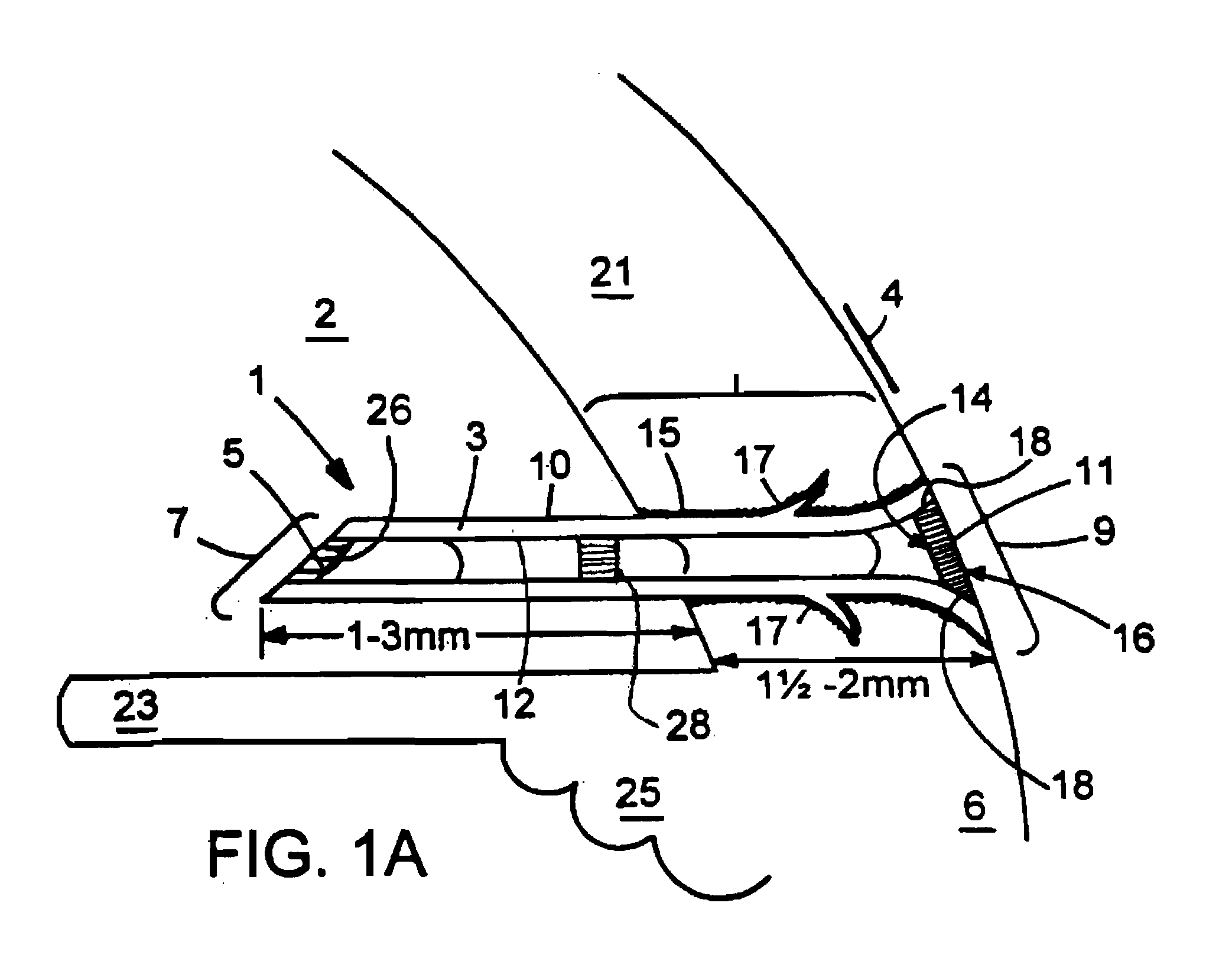Glaucoma Treatment Devices and Methods
a technology for treating glaucoma and glaucoma, applied in the field of treating glaucoma, can solve the problems of many complications, limited surgery success, and many life-threatening side effects, and achieve the effects of reducing resistance to aqueous humor outflow, increasing intraocular pressure, and increasing intraocular pressur
- Summary
- Abstract
- Description
- Claims
- Application Information
AI Technical Summary
Benefits of technology
Problems solved by technology
Method used
Image
Examples
Embodiment Construction
[0037] This document relates to methods and materials for treating glaucoma. In particular, this document relates to devices wherein a generally tubular body is provided which is of sufficient length to allow aqueous humor to flow from the anterior chamber of an afflicted eye through a lumen of the tubular body and into the tear film when the device is implanted in the sclera. A filter capable of providing outflow resistance to aqueous humor flowing through the lumen can be provided in the device. In some cases, the devices provided herein can contain a flexible filter that responds to pressure changes such that the outflow resistance decreases as intraocular pressure increases. The device may be implanted in the sclera of an afflicted eye to treat glaucoma.
[0038] The devices provided herein have numerous advantages. For example, the devices provided herein can drain aqueous humor into the tear film, rather than into the subconjuctival space. This can reduce the risk of developing,...
PUM
 Login to View More
Login to View More Abstract
Description
Claims
Application Information
 Login to View More
Login to View More - R&D
- Intellectual Property
- Life Sciences
- Materials
- Tech Scout
- Unparalleled Data Quality
- Higher Quality Content
- 60% Fewer Hallucinations
Browse by: Latest US Patents, China's latest patents, Technical Efficacy Thesaurus, Application Domain, Technology Topic, Popular Technical Reports.
© 2025 PatSnap. All rights reserved.Legal|Privacy policy|Modern Slavery Act Transparency Statement|Sitemap|About US| Contact US: help@patsnap.com



